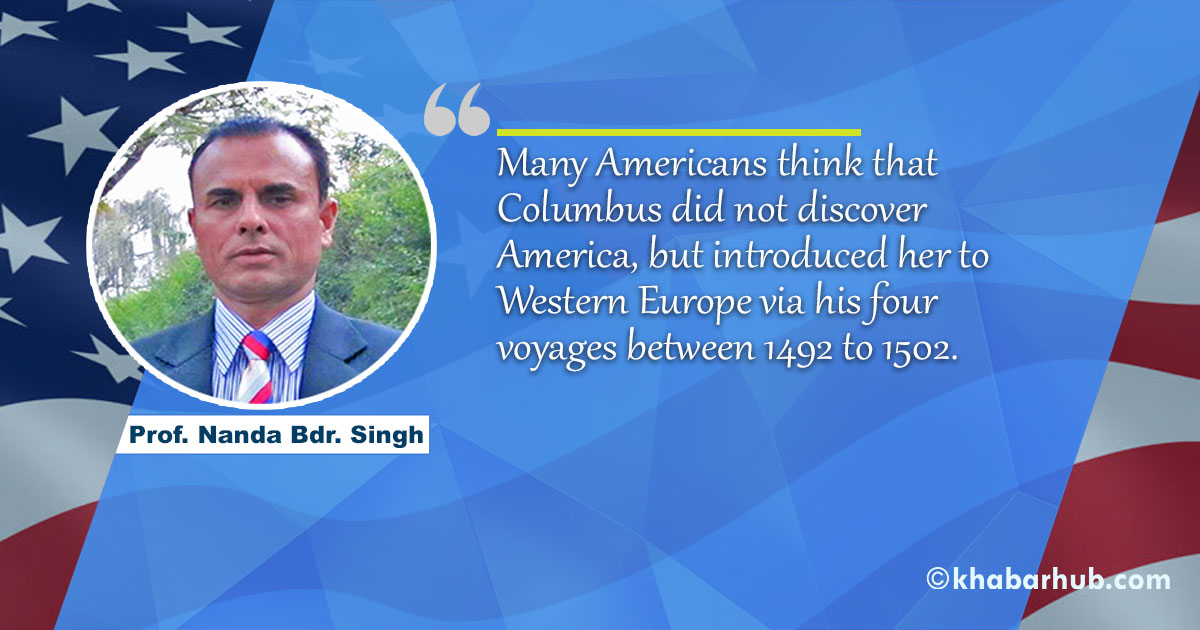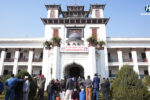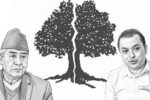Who were the first founders and name-givers of the present day America would be a matter of interest to all of us. It’s evident “out of Africa hypothesis” supports that all humans came out of Africa and migrated to today’s the Middle East, specifically the realm between Euphrates and Tigris rivers known as Mesopotamian civilization and then began to diversify from there to different parts of the world.
It is a very pertinent and fascinating question to crack down all the human migrations globally but in this article, I would be focused only on America. How America developed into such a splendid innovation, development, prosperity and a powerful nation would be the outcomes of my successive impending articles. I will start with America and move to various other countries as well.
It is, in fact, my first article on America, so I should start with cracking down the answers of when and who were the “first founders” or native people of present-day America along with the persons who christened America.
To begin with, several experts agree that the first Americans came from Asia. There are basically two competing theories of pleading different migratory routes to America. One model based on the land route known as “Bering Land Bridge Theory” explains that people from East Asia migrated to the site of Yana river of Siberia some 40,000 years ago.
Those people who began to migrate via Beringia were called Beringians and were the first Asian people to put their footprints on the American soil around 15,000 years ago when there was an ice-free corridor between the Cordilleran and Laurentide ice sheets. They hunted birds and brought dogs with them, trekked over 16 kilometers per day and arrived at the end of the corridor in four months.
The 2nd model is based on the Coastal Route theory which pleads that humans from East Asia paddled their small boats in Southern Beringia down the western coast of America some 16,000 years ago. A new study led by Dr. Jason Briner of the University of Buffalo suggested a new theory of Alaskan coastal migration route to America about 17,000 years ago which is different from Bering Strait route about 40,000 years ago.
Whatever these two theories explain do chime with each other in terms of the first people who migrated to America were Asians, but did have differences in terms of little bit time and route of migration only. In this regards, a study of over 600 examples of mitochondrial DNA from 20 different American and 26 Asian populations suggests the first migrants from Asia stayed about 15,000 years in Beringia before moving south accepting “Beringian standstill and spread of Native American Founders concept” published online in the journal PLoS One.
Nuclear and mitochondrial DNA analysis of Anzick-1 boy discovered in 1968 at Wilsall, Montana, USA revealed that Anzick-1 infant represented an ancient migration to North America from Siberia about 12,707–12,556 years ago.
Norse Viking history of exploration of the new world started with Bjarni Herjolfsson, the first Ice-lander to explore “New World” (North America, Central America, and South America) in between 985 and 986 who erroneously spotted Americas after drifting off course on a journey to Greenland.
Another Ice-lander Leif Ericson was the first person to set foot on continental America termed as “Vinland” tentatively five centuries prior to the voyages of Christopher Columbus (1492) and John Cabot (1497). Some people observe October 12 as the Columbus Day to celebrate the discovery of America by Columbus on October 12, 1492. But many Americans think that Columbus did not discover America, but introduced her to Western Europe via his four voyages between 1492 to 1502.
Then comes the era of the arrival of Amerigo Vespucci, an Italian Merchant and explorer in the new world in the year of 1501-1502 just about 9 to 10 years later than Columbus discovered America. Vespucci clearly demonstrated that Brazil and the East Indies were not the parts of Asia as Columbus used to claim. He called the newly explored fourth continent after Europe, Asia, and African as “New World”. The new world was named as “The Americas” after Latin version of his first name “Americus” from “Americus Vespucius”. Martin Waldseemueller, a 16th-century German geographer and map-maker is credited with naming of America in 1507 in a work called Cosmographiae Introductio. He named the continent after Americus Vespucius the Florentine navigator who was believed to have discovered mainland America as explained before.
Hence, the name of America came into existence which is very famously known to all of us as “The United States of America” (USA) these days. Thereafter, red people of the Americas were called Red Indians which was a mistaken denominator for many people of America. They should be called “Red Americans” correctly instead of Red Indians.
Present day America is one of the 3rd biggest countries in terms of her geographical size of 9.63 million square km as well as the population size of 331,195,364 as of April 21, 2019. America is the land of opportunity, the destination of hope and expectation for many people in the world. Today’s America is the cosmopolitan nation of all nations in the world. Unity in diversity is the theme of American society. What makes America more attractive? Can we make our nation like this? If yes, let us think and act on time.
Views expressed in this article are the author’s own and do not necessarily reflect the stance of Khabarhub.









Comment